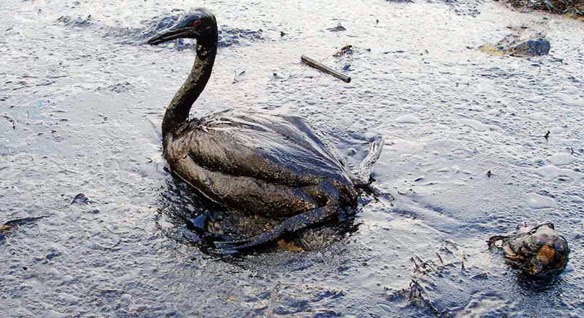West Nile virus recent deaths reminded me of this story.
Waiting only therapy for West Nile: Family tries to understand disease that took their mom
BYLINE: PATRICIA GUTHRIE
DATE: December 21, 2005
PUBLICATION: Atlanta Journal-Constitution, The (GA)
EDITION: Home; The Atlanta Journal-Constitution
SECTION: Metro News
PAGE: E1
During the last hours of the long vigil, they sang, they cried, they repeated well-worn tales from their childhood. The time their mother sent out her own students to look for crawfish and frogs to dissect in class, the way she taught her sons to hunt squirrel and clean fish, how she didn't flinch when her daughter dragged home injured birds and other assorted Florida Panhandle creatures.
What they didn't talk about was the fluke of nature that had brought her to that moment.
 The next day, Dec. 14, Allene Chapman Atwood, 87, died at Emory University Hospital. Although public health officials haven't confirmed the death as West Nile-related, Atwood's death certificate states she died of respiratory failure as a consequence of pneumonia and West Nile encephalitis.
The next day, Dec. 14, Allene Chapman Atwood, 87, died at Emory University Hospital. Although public health officials haven't confirmed the death as West Nile-related, Atwood's death certificate states she died of respiratory failure as a consequence of pneumonia and West Nile encephalitis. "The diseases we face, they change, they mutate, they evolve and present us with continual challenges. "And, unfortunately, they take good people with them."Overall, 20 human cases, including Atwood's, have been reported in Georgia this year. A 63-year-old Columbus man died in October from the mosquito-borne disease.
West Nile virus is transmitted through the bite of a mosquito that has picked up the virus by feeding on an infected bird. Atwood most likely contracted the virus in late October or early November in the waning days of fall.
A former high school biology teacher, Atwood spent much time outdoors tending the roses, azaleas and hostas lining her sprawling Stone Mountain backyard, which is bordered by a creek. She was unusually healthy and active for her age, lived alone and still drove to church and the store. She had raised three young children after her husband, Dr. Max Burton Atwood Sr., died in 1959.
"She loved the beach, she loved the outdoors, she loved the mountains in the fall," said Atwood's daughter Mozelle Funderburk as she held her mother's hand the night before she died.
Yearly caseload falls
West Nile first appeared in the United States in 1999 in New York City. Via infected birds, it spread across the country.
"In the early years, everyone was in a frenzy about it so everyone who got bit by a mosquito thought they were certain to die," said Dr. Stuart Brown, director of the state Division of Public Health. "I honestly feared it would become a major health burden but it hasn't."
Georgia first reported the disease in 2001 when six people developed West Nile encephalitis and one died. Since then, 142 cases and 13 deaths have occurred. Every year, the number of Georgians sickened by the virus has dropped.
Public health officials attribute the decline to aggressive prevention and public awareness efforts. They seasonally hammer home the message: Wear DEET repellent and long sleeves outdoors and remove standing water. Atwood's family said she took such precautions.
Nationally, 764 people have died from West Nile complications since 1999, according to the Centers for Disease Control and Prevention.
Most people recover from it and many never even realize they've been infected, experts say. Only about two of 10 people bitten by an infected mosquito will experience any illness, and usually it's a passing headache and fever.
People over the age of 50 and those with weak immune systems are most at risk for developing the most serious consequences: meningitis and encephalitis.
Georgians ranging in age from 5 to 87 have survived or succumbed to the virus, which has no cure and no vaccine.
"We really don't have therapy for West Nile so we watch and wait," said Dr. Carlos del Rio, an Emory and Grady Memorial Hospital infectious disease specialist who's treated several West Nile patients, including Atwood.
"It's hard to know what the course of the disease will be," he said. "One man I saw at Grady was really confused and disoriented but three days later, he was fine. And some people go on to develop polio-like symptoms requiring a lot of rehabilitation."
A sudden illness
On Nov. 10, the day after coming home from a visit with her great-granddaughter in Auburn, Ala., Atwood suddenly felt feverish and sick. But she couldn't figure out how to use the telephone to call her daughter. She stumbled over to a next-door neighbor, who called relatives.
West Nile virus had triggered encephalitis, an inflammation of the brain that causes high fever, severe headache and strokelike symptoms, leaving her disoriented, weak and unable to communicate.
Her fever spiked to 104 degrees in the emergency room. Funderburk called her two brothers in Virginia and California, fearing time was running out.
Their mother survived but she was left with neurological damage. Day to day, her condition varied, perplexing both relatives and doctors.
One day, she couldn't swallow; the next, she demanded ice cream, tired of ice chips.
On Nov. 18, blood tests revealed she'd been infected by West Nile virus.
'Fought for four weeks'
Atwood fought off the initial attack of West Nile fever, then the neurological trauma of encephalitis. In early December, she rallied. Doctors transferred her to Emory's Wesley Woods Budd Terrace nursing home to start receiving rehabilitation. But within three days, her lungs filled with pneumonia. She stopped breathing. After being revived, paramedics transferred her back to Emory University Hospital by ambulance.
Family, friends and minister gathered around and sang into the early morning hours of Dec. 13. Hymns, old show tunes, lullabies.
The woman with the green thumb and snowy hair had also passed on a love of music. Her "angel choir" didn't stop until 3 a.m.
Twenty-three hours later, Atwood died with three generations surrounding her.
"She fought for four weeks. It just took too much," said 55-year-old son Max Atwood. "She just didn't have the reserves."
Atwood's family is still trying to understand the illness that took their mother's life. The three children, who all work in environmental or science fields, say they found little practical information to help them through the ordeal. They said their mother would have wanted others to learn from her illness.
"You always hear about West Nile but nobody knows what it does or what to expect," said son James Atwood.
His mother, born Jan. 31, 1918 in the front bedroom of a farmhouse in Ludowici, had feared malaria growing up, he said.
That she lived long enough to confront a new mosquito-borne disease is a testament to her long life, he said.
"It's our environment, it's what's all around us," he said. "The diseases we face, they change, they mutate, they evolve and present us with continual challenges."And, unfortunately, they take good people with them."
Photo
PATRICIA GUTHRIE / Staff
Mozelle Funderburk clasps her mother's hand (above) after Allene Atwood's family drew around her.
Photo
PATRICIA GUTHRIE / Staff
Granddaughter Eve Brantley and her own daughter, Chloe, catch up on sleep while with Atwood in her last days.
Photo
Allene Atwood












